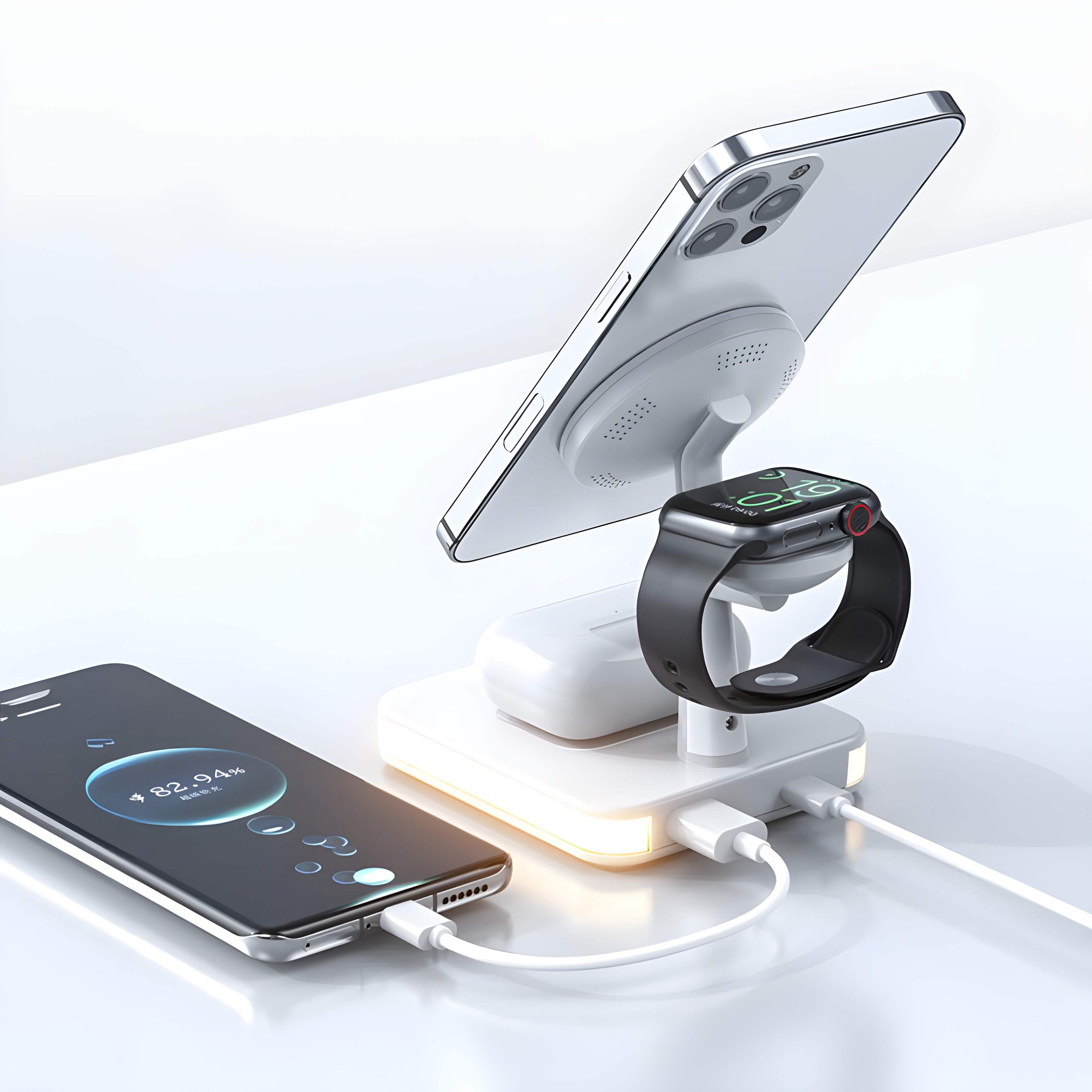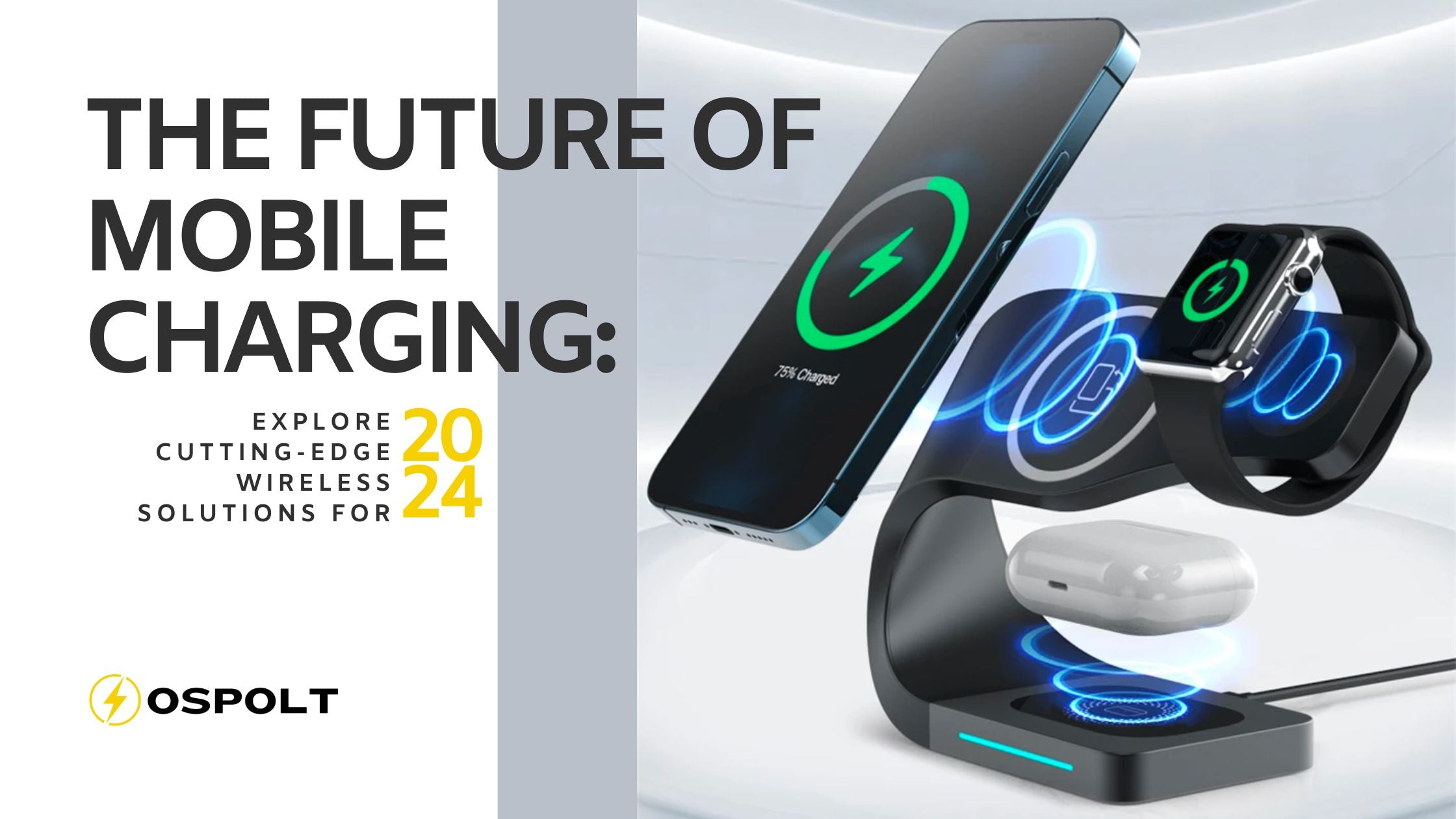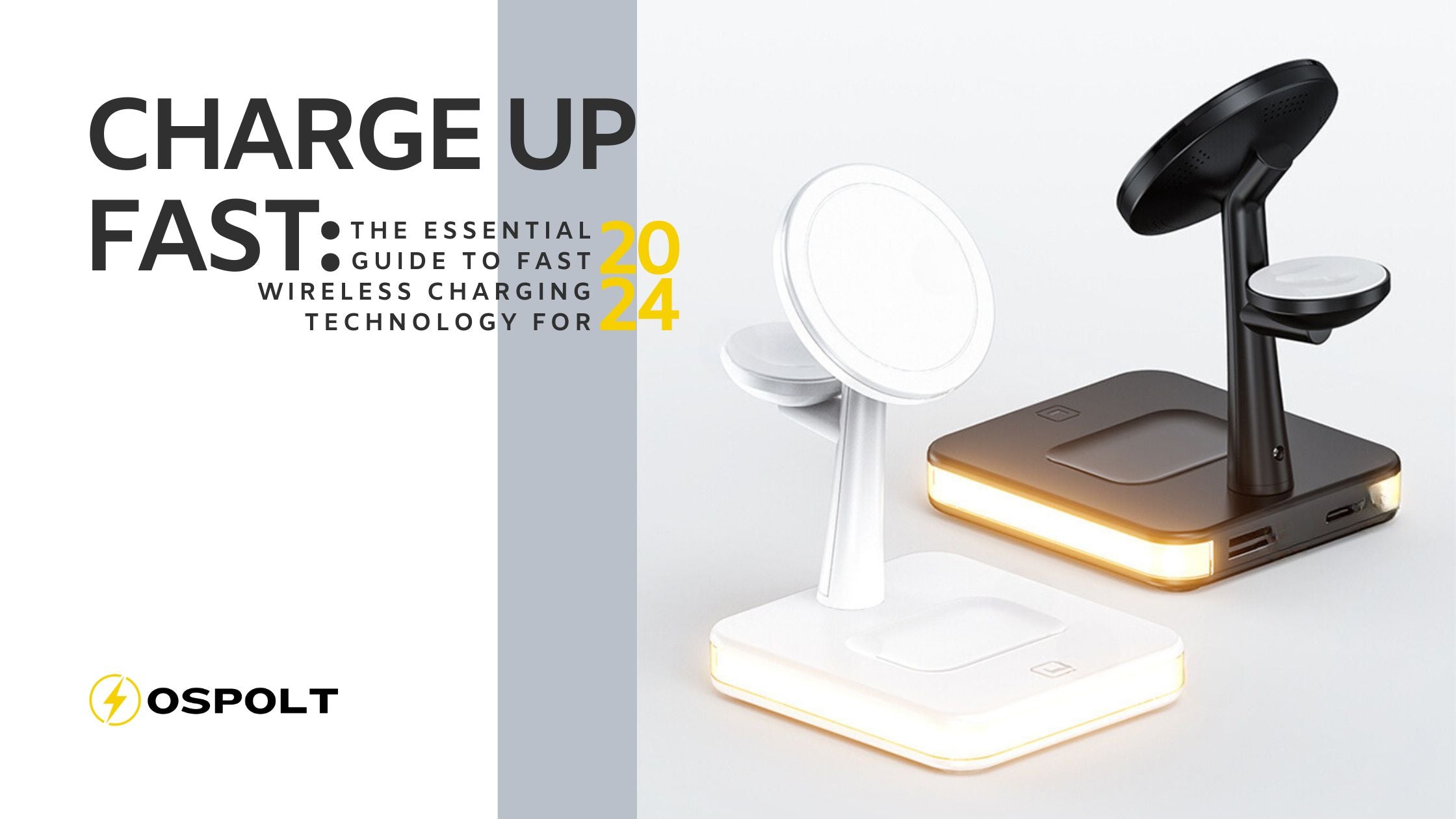In an era where convenience often dictates technology adoption, wireless charging has emerged as a beacon of innovation, promising to unshackle us from the clutter of cables and connectors. Yet, despite its growing popularity, numerous myths and misconceptions cloud the true capabilities and safety of this technology. From unfounded fears about health risks to debates over charging efficiency, these myths can deter users from embracing a truly transformative solution.
Why is it important to debunk these myths? Because understanding the facts can not only enhance your daily tech experience but also help you make informed decisions about the devices you choose to rely on. In this post, we'll take a closer look at some of the most common myths surrounding wireless charging. We'll examine the evidence and bring clarity to a topic that continues to be misunderstood by many.
Whether you’re a tech enthusiast curious about upgrading your gadget arsenal or a cautious consumer hesitant about new technologies, this guide aims to dispel the fog of misconceptions and illuminate the real advantages of wireless charging.
Myth 1: Wireless Charging is Unsafe
One of the most persistent myths about wireless charging is that it poses significant health risks, including concerns about radiation exposure. It's a concern that can make anyone hesitant, but let's look at the facts.
Understanding Electromagnetic Fields
Wireless chargers use electromagnetic fields (EMF) to transfer energy from the charging pad to the device. These fields are similar to those used in other common household devices like WiFi routers and microwave ovens. According to the World Health Organisation and other health research bodies, the low levels of EMF produced by wireless chargers fall well within international and national safety standards and are considered safe for everyday use.
Regulatory Standards and Compliance
Wireless charging devices that are available on the market must comply with strict regulatory standards for health and safety. These standards ensure that the electromagnetic emissions are below a level that could pose health risks. For instance, products sold in the European Union must comply with the EU's electromagnetic compatibility directives, while in the United States, they must meet the guidelines set by the Federal Communications Commission (FCC).
Expert Opinions and Research
Numerous studies have investigated the impact of EMF exposure from wireless chargers and have found no evidence that they pose any health hazard. In fact, the level of EMF exposure from wireless charging is significantly lower than many other electronic devices that are commonly used without concern.
Practical Safety Features
Modern wireless chargers are often equipped with additional safety features that further mitigate any potential risks. These include foreign object detection, which automatically shuts off the charger if something other than the compatible devices is detected, preventing unnecessary EMF exposure and overheating.
Myth 2: Wireless Charging is Much Slower Than Wired Charging
The belief that wireless charging can’t keep up with the speed of traditional wired charging is widespread, but recent advancements have significantly narrowed this gap. Here’s what you need to know:
Technological Advances
Initially, wireless charging did lag behind wired options in terms of speed. However, with the advent of fast wireless charging technology, this is no longer the case for many devices. Today, wireless chargers capable of delivering up to 15 watts of power can recharge devices as quickly as some wired chargers. For instance, the latest smartphones can achieve a 50% charge in just about 30 minutes using advanced wireless charging pads.
Device and Charger Compatibility
Achieving optimal charging speeds isn't just about the wireless charger itself; the entire setup plays a crucial role. Many modern smartphones and wireless chargers support various fast charging standards that allow for quicker power delivery, but the compatibility between the charger, the device, and the power adapter is key. To truly benefit from fast wireless charging capabilities, it’s essential to use a charger that matches or exceeds the maximum input your device can handle, along with a compatible power adapter. For instance, pairing a fast wireless charger with a Quick Charge 3.0 compatible power adapter can significantly enhance charging efficiency. This is a common oversight that can lead to slower charging speeds if not addressed properly. By ensuring all components are compatible, users can enjoy the full potential of their fast-charging technology.
Efficiency Enhancements
Wireless charging technology continues to evolve, focusing on enhancing the efficiency of power transfer. Innovations such as multi-coil chargers have improved the alignment issues that once slowed down the charging process, ensuring more consistent and faster charging.
Real-World Usage
For many users, the slight difference in charging time is outweighed by the convenience of wireless charging. Being able to simply place your phone on a pad without fiddling with cables, especially in environments like cars or while working at desks, offsets a few extra minutes of charging time for most users.
Myth 3: Wireless Chargers are Inefficient and Waste Energy

A common misconception is that wireless chargers are significantly less efficient than their wired counterparts, leading to wasted energy. While it's true that early models of wireless chargers weren't as efficient as wired chargers, significant advancements have been made. Here's what you need to know:
Improving Efficiency
Modern wireless chargers have made considerable strides in improving energy efficiency. One notable advancement is Apple's introduction of MagSafe technology, which significantly enhances the alignment of charging coils between the charger and newer iPhone models. This precise alignment maximises energy transfer, making the charging process not only faster but also more energy-efficient. MagSafe chargers are designed to perfectly align with the magnets in compatible iPhones, ensuring optimal placement and reducing the energy loss typically associated with poor alignment in standard wireless chargers.
Furthermore, the latest models of wireless chargers now boast efficiency rates close to those of wired chargers, particularly when devices are correctly aligned. While earlier wireless chargers might have had efficiency rates around 60%, newer models, including those equipped with MagSafe technology, can achieve rates upwards of 80%. This improvement is approaching the efficiency of traditional wired charging solutions and represents a significant leap forward in wireless charging technology.
Manufacturers continue to innovate in this area by enhancing the design of coils and circuits, reducing energy loss, and optimising the overall power transfer process.
Understanding Efficiency Rates
The efficiency of a wireless charger is determined by how much of the power drawn from the wall is actually used to charge the device. While older wireless chargers might have had efficiency rates around 60%, newer models can achieve rates upwards of 80%, approaching the efficiency of traditional wired charging solutions. It's important to look for chargers that specify their efficiency rate, which can be a good indicator of their performance.
Minimising Standby Power
One of the criticisms of wireless chargers is the potential waste of energy when not in active use but still plugged in, known as standby power consumption. However, modern chargers are designed to minimise this waste, with many models incorporating smart features that reduce power consumption when the charger is not in use.
Eco-Conscious Choices
As consumers become more environmentally conscious, manufacturers are responding by creating more energy-efficient wireless chargers. These advancements not only cater to the demand for greener products but also help reduce the overall environmental impact of charging technology.
Myth 4: Wireless Charging Damages Phone Batteries
Concerns about wireless charging potentially damaging phone batteries—specifically, that it might lead to faster degradation or overheating—are common but largely unfounded with modern technology. Here’s the truth about how wireless charging impacts battery health:
Battery Wear and Heat Generation
One of the primary concerns with wireless charging has been the heat generated during the charging process, as excessive heat can indeed impact battery health. However, advancements in charger design and smart charging technology have significantly reduced heat generation. Modern wireless chargers often include features such as temperature control and foreign object detection, which help manage heat and ensure safe charging conditions.
Long-Term Battery Health
Studies and user data indicate that wireless charging does not degrade battery health any more significantly than wired charging. In fact, because wireless charging can be more gentle with consistent, controlled power delivery, it may even help in maintaining battery health over time. The key is using a high-quality charger and avoiding leaving devices on the charger for extended periods after reaching full charge.
Smart Charging Technology
Modern wireless chargers are not only about convenience but also about enhancing battery preservation through intelligent charging protocols. A significant feature in many of these chargers is trickle charging, which plays a crucial role in maintaining battery health. Once the battery reaches about 80% capacity, the charger switches to a trickle charge mode. This method involves slowly charging the remaining 20% to prevent overcharging and reduce the stress on the battery, thereby extending its lifespan.
This approach is particularly beneficial for overnight charging scenarios, where the charger can manage the charging process to avoid keeping the battery at 100% for prolonged periods, which can be detrimental to battery health. According to research from Battery University, maintaining a lithium-ion battery at 100% charge can put more strain on the battery and contribute to quicker degradation. By utilising a controlled trickle charge, wireless chargers ensure the battery remains in a more optimal charging state, which is less taxing over the long term.
Moreover, many smart wireless chargers now have the capability to monitor the battery's charge level and automatically adjust the output. This intelligent power management helps to minimise heat production and optimise charging efficiency, further supporting the health and longevity of the battery.
Consumer Experience and Feedback
Feedback from consumers who regularly use certified wireless chargers shows no significant difference in battery lifespan compared to those who use traditional wired charging methods. This real-world feedback is crucial in debunking myths and underscoring the effectiveness of current wireless charging technology in preserving battery health.
Myth 5: All Wireless Chargers are the Same
A common misconception is that all wireless chargers offer the same features and performance, but this couldn't be further from the truth. The variety in wireless chargers can significantly affect your charging experience, from speed and efficiency to compatibility and safety features. Here’s what sets them apart:
Variety in Charging Speeds and Capabilities
Wireless chargers come in different wattages, impacting how quickly they can charge your device. While standard chargers may offer around 5 watts of power, more advanced models can provide 15 watts or more, significantly speeding up the charging process. Additionally, some chargers are optimised for specific devices or brands, offering enhanced performance through tailored technology like Apple’s MagSafe or Samsung’s Fast Charge.
Design and Build Quality
Not all wireless chargers are created equal in terms of design and construction. Premium chargers often feature higher-quality materials and more thoughtful designs that not only complement your home or office decor but also provide better durability and device stability during charging.
Advanced Safety Features
Safety is another critical differentiator. Higher-end models include multiple safety features such as over-current protection, over-voltage protection, temperature control, and foreign object detection. These features help ensure that charging is not only fast but also safe, protecting both the charger and the connected devices from potential damage.
Certification Standards
Certification by recognised standards bodies, such as the Wireless Power Consortium (WPC) for Qi certification, is a crucial factor that distinguishes various wireless chargers. Certified chargers have been tested to meet rigorous safety and efficiency standards, providing reassurance that they perform as advertised.
Integration with Other Technologies
Some wireless chargers integrate additional functionalities like LED indicators, cooling fans, or even Bluetooth speakers, clocks and night lights. These features can enhance the utility and value of the charging station, offering more than just a simple power transfer solution.
Conclusion
Wireless charging technology has come a long way, offering a blend of convenience, efficiency, and innovation that is hard to match with traditional charging methods. However, as with any rapidly evolving technology, misconceptions can arise that may deter users from taking full advantage of these advancements. Today, we've debunked some of the most common myths surrounding wireless charging—from unfounded safety concerns and exaggerated inefficiencies to misunderstandings about battery health and the variability of charger features.
Understanding the facts about wireless charging allows us to appreciate not only the technological marvel it represents but also how it can seamlessly integrate into our daily lives. By choosing the right charger—considering factors like power output, safety features, and compatibility—you can enhance your charging experience while ensuring that your devices are powered safely and efficiently. Check out our complete guide to choosing the right wireless charger for more information.
As technology continues to advance, it is essential to stay informed and sceptical of oversimplified claims. Embrace the benefits of modern wireless charging, and let go of outdated apprehensions. With the right knowledge and tools, wireless charging can offer a powerful and convenient solution for keeping your devices charged and ready to go.





Leave a comment
All comments are moderated before being published.
This site is protected by hCaptcha and the hCaptcha Privacy Policy and Terms of Service apply.